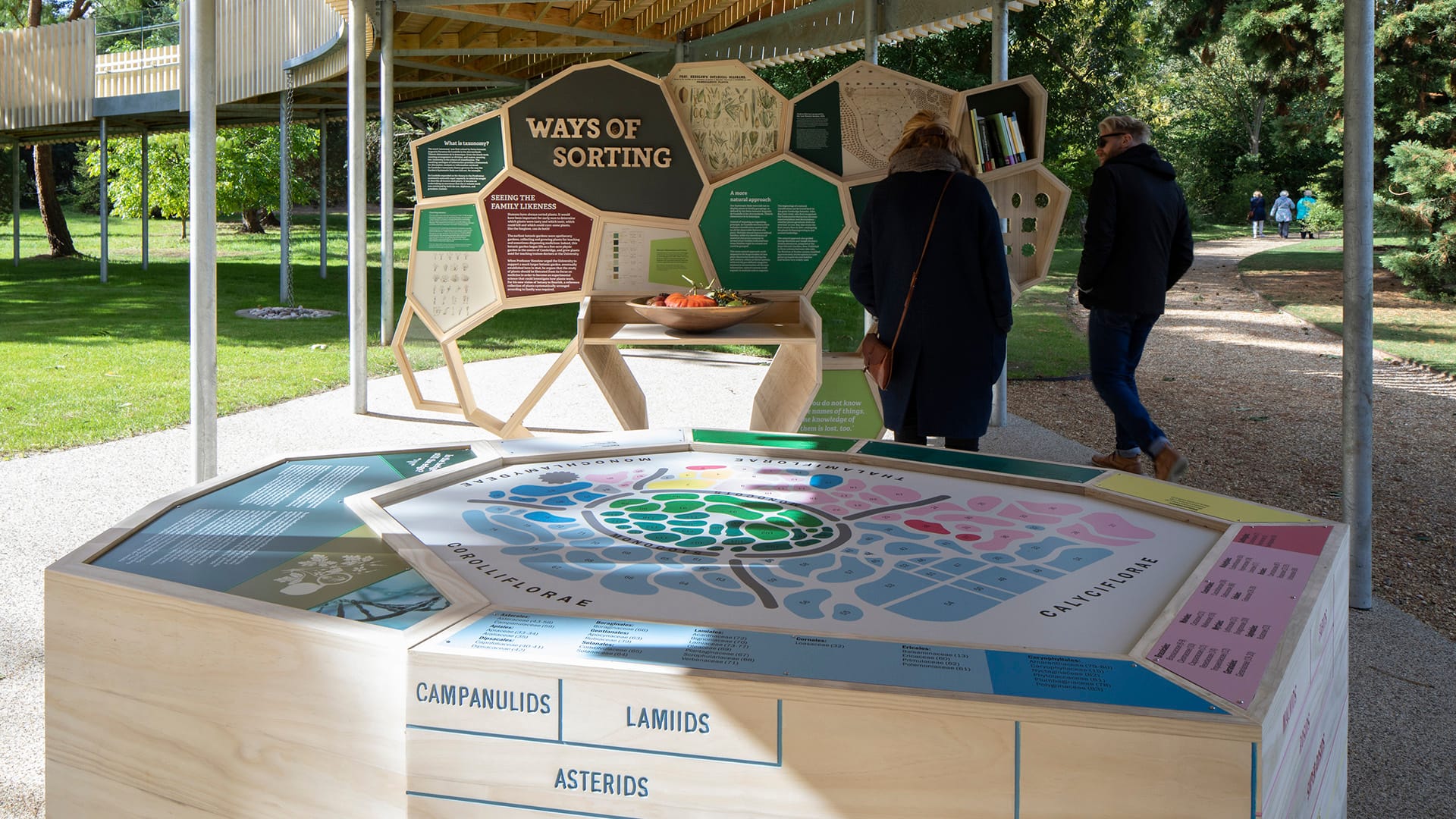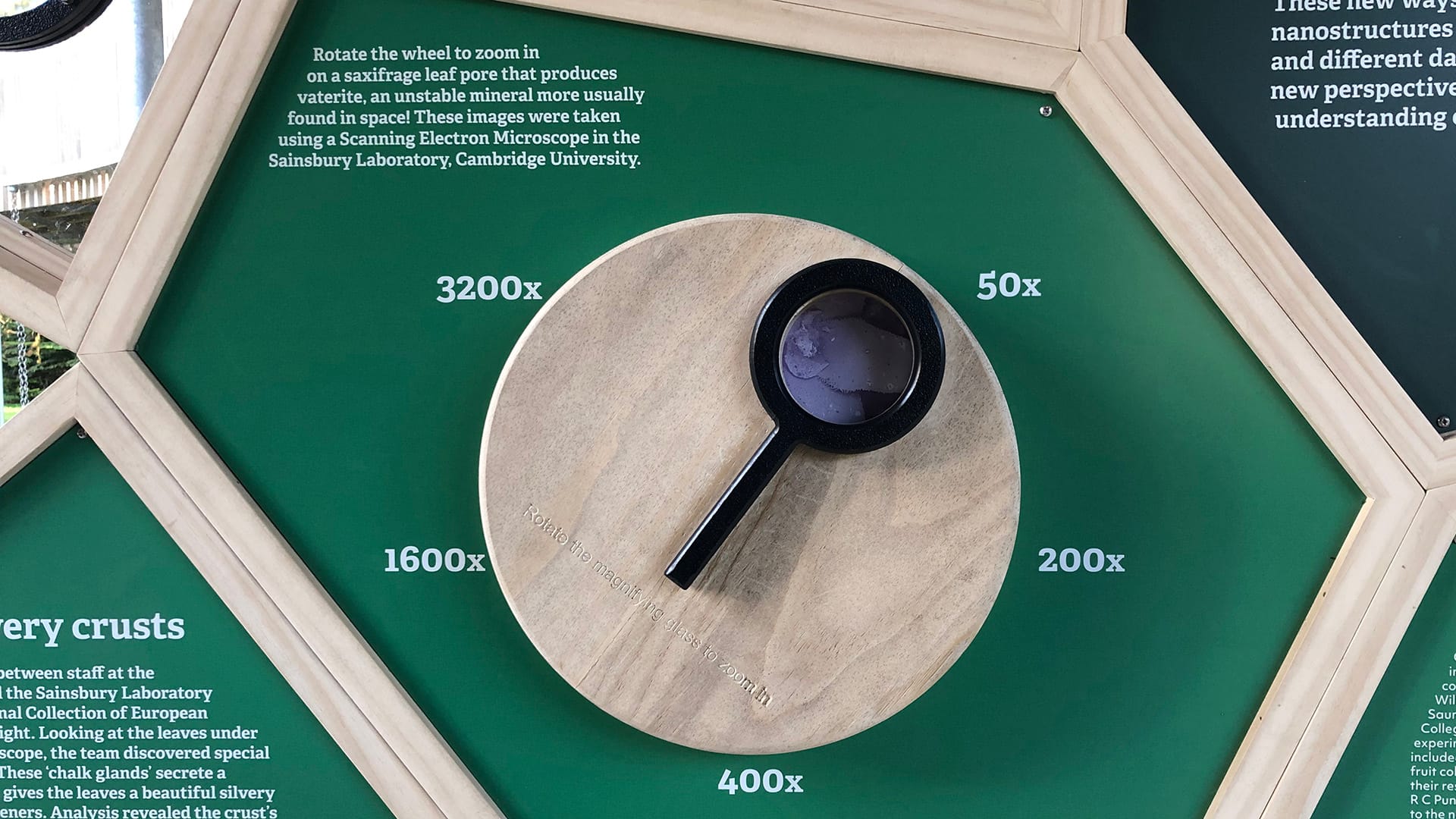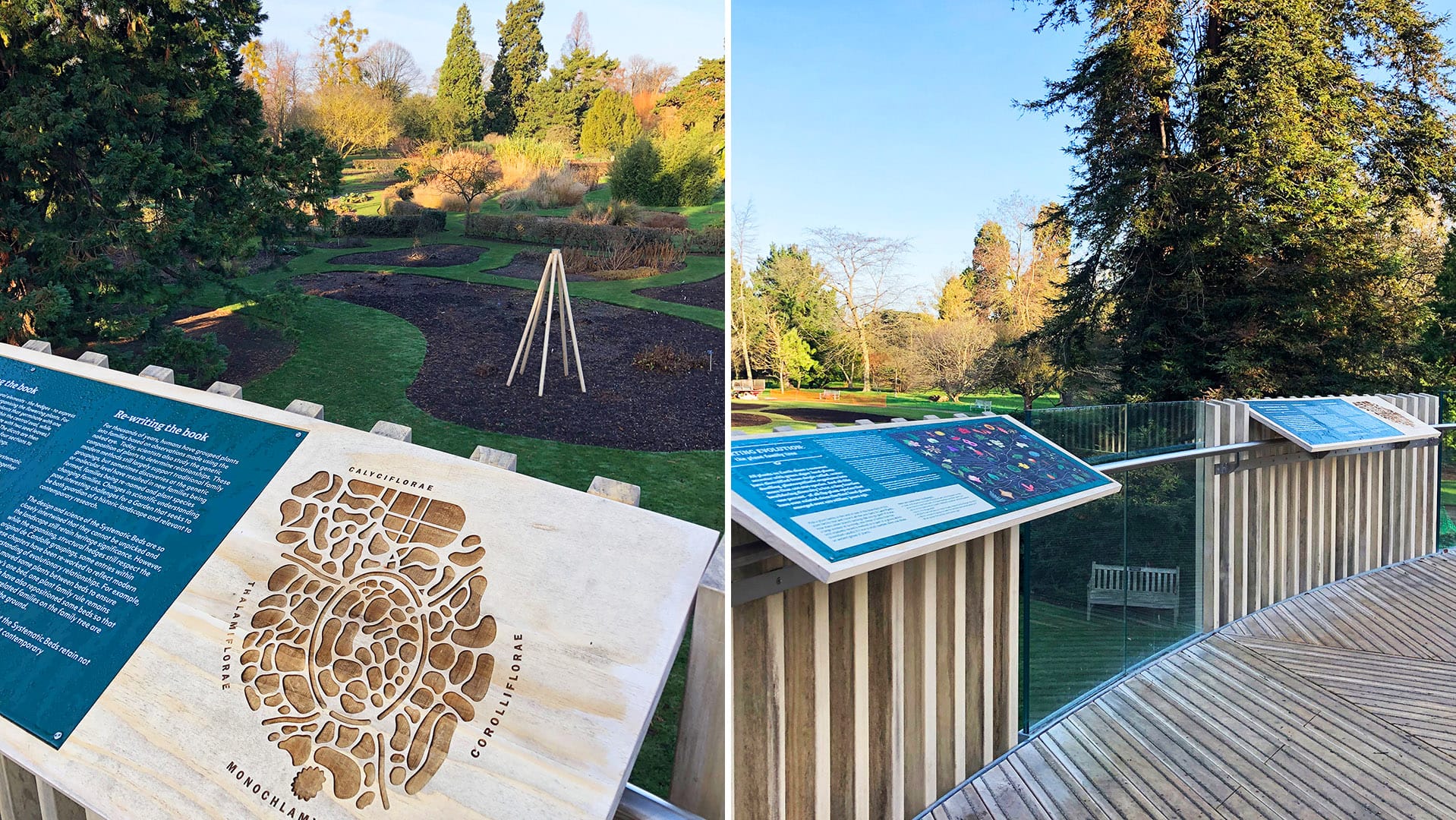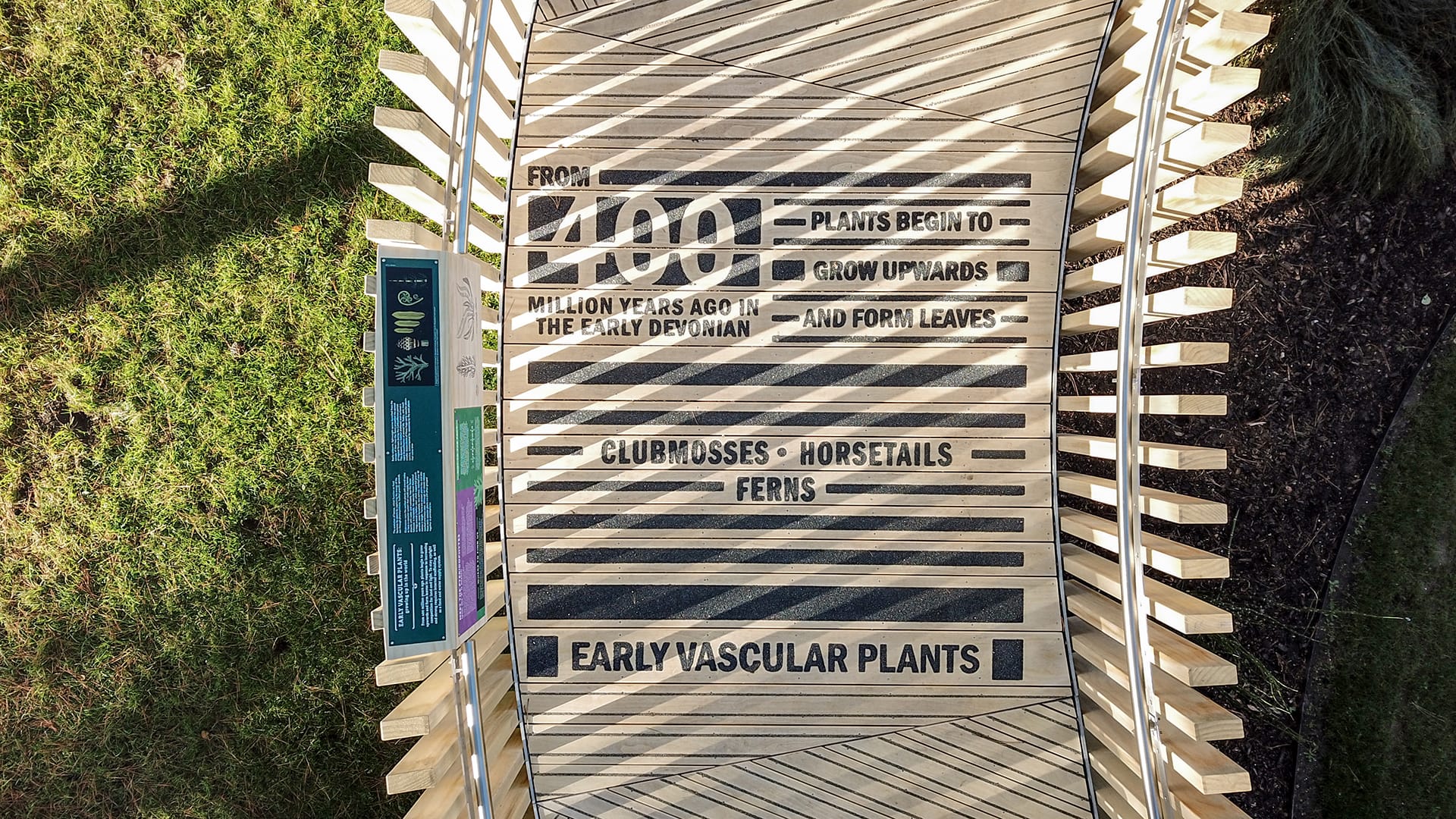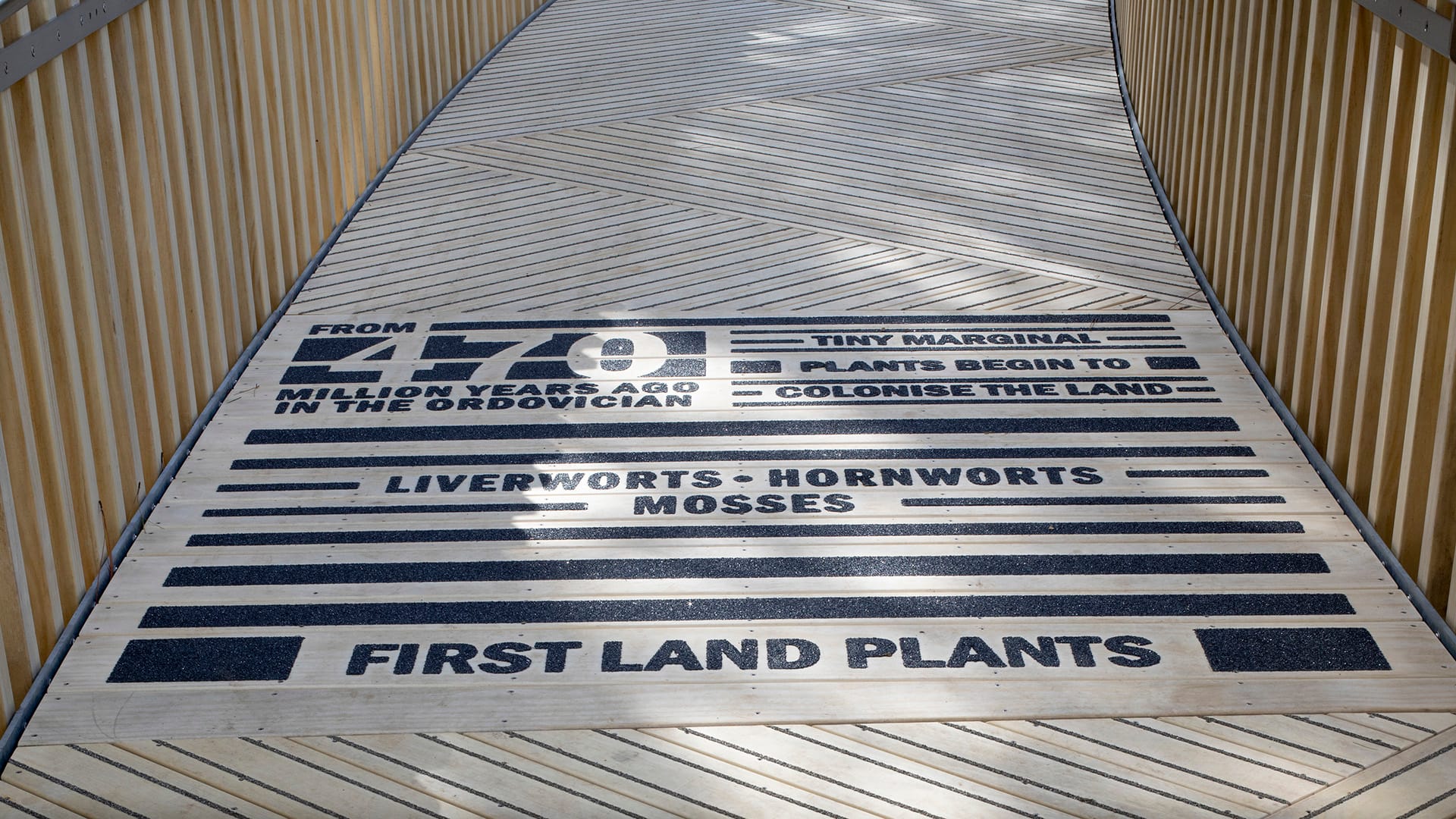The Rising Path is part of the Understanding Plant Diversity Project which aims to revitalise the contemporary relevance of the Systematic Beds for researchers, teachers and visitors by offering exciting new ways to explore plant taxonomy.
The path winds up to a viewing platform. From there visitors can to see for the first time the full extent and layout of the Systematic Beds from a three-metre high vantage point.
On the deck and balustrade interpretation highlights the evolutionary innovations that allowed plants to leave water for life on land and proliferate into the 400,000 species known today.
Beneath the path, an installation expands on the twin educational purpose of the Systematic Beds: how to look at plants and how to organise those plants in order to provide a robust framework for research and understanding.
The design is inspired by plant cell structures and invites visitors to explore family resemblances by identifying shared physical features - the approach by which the Systematic Beds were laid out in
1846 - and also to understand the plant family
tree in today’s post-Darwin evolutionary context.
A relief model of the Systematic Beds highlights areas of convergence and divergence of both approaches, charting how scientific understanding has changed.
Interactive elements including relief rubbings, stem-shape sorters, a plant building activity, a seed abacus, a nature table and a crawl-through of underground root shapes, encourages an active approach to observing plants.
The interpretation artwork draws widely from the collections of the University of Cambridge, including Charles Darwin’s pressed plant material from his voyage on HMS Beagle in the University Herbarium and Edward Lear’s Nonsense Botany in the University Library.
Email us to discuss a project



